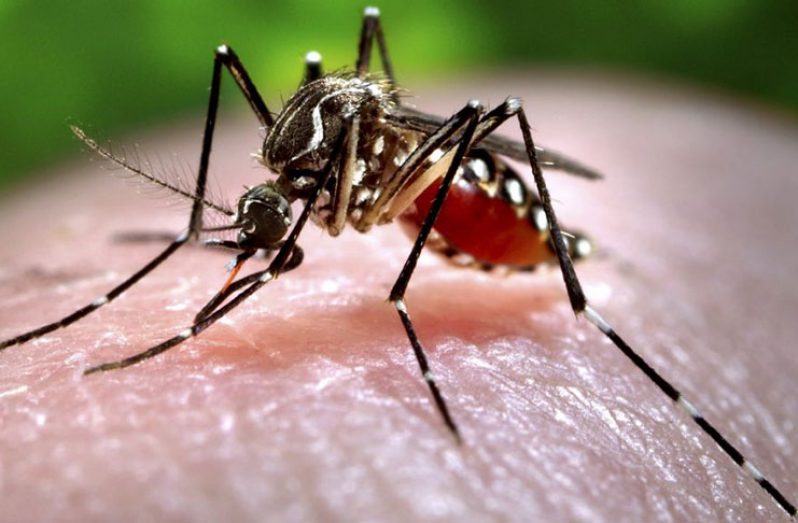THERE had been a notable decrease in the number of recorded cases of malaria last year.
This disclosure was made by Head of the Vector Control Unit, Dr. Horace Cox during a telephone interview with the Guyana Chronicle on Tuesday. He indicated that the 2016 figure is still preliminary and the Unit is in the process of compiling a final report.
Former Minister of Public Health, Dr. George Norton had said at a recent press conference that, “in 2016 some 9415 new cases of Malaria were recorded across the ten administrative regions, with Region One (Barima-Waini) recording the largest number of cases.”
However, among the notable achievements under the Malaria sub-programme were the reduction in the number of recorded Malaria cases from 13, 245 in 2015 to 11, 149 in 2016, the launching and monitoring of the Region Eight (Potaro-Siparuni) pilot project for miners, as well as the recognition of health workers involved directly in malaria case management both centrally and regionally.
The Malaria sub-programme had a targeted focus in the fight against the Anopheles mosquitoes, ranging from vector control interventions to diagnosis and treatment. Fighting Malaria in Guyana continued in 2016 with the training of healthcare workers in malaria case management. 79 persons from Regions One (Barima-Waini), Seven (Cuyuni-Mazaruni) and Eight were trained and training is ongoing in Region Nine (Upper Takutu-Upper Essequibo), while 22 health workers were trained from the remaining regions of Guyana.
Meanwhile, routine distribution of long-lasting insecticide nets at public health facilities in the malaria endemic regions continued as well.
In 2016, there was increased public awareness of Malaria, which saw measures such as the designing and erecting billboards in Regions seven and nine, designing and printing pocket guides on the use of the malaria rapid tests, printing and distribution of colouring books on malaria prevention and control for school-aged children in the malaria endemic regions, said Norton.
Additionally, there was surveillance for the Aedes Aegypti larva and other species of mosquitoes breeding, which transmit dengue and yellow fever and also malaria.
The main diseases spread by Aedes mosquitoes in Guyana include Dengue fever, Chikungunya and Zika. The circulation of Aedes-borne illnesses has been all along the coastal regions of Guyana and therefore all efforts are geared towards these specified geographical areas.
In 2016, Norton confirmed that there were 842 cases of Dengue fever, 35 lab confirmed cases of Zika and 135 cases of Chikungunya. The first case of Zika was diagnosed in January, 2016 and lab confirmed cases show distribution in most of the ten administrative regions with greater incidence along the coastal regions of Guyana. Zika became a budding endemic but, quick action by the Ministry resulted in the prevalence of the disease being reduced. “There were a host of activities which target improved health awareness of Zika and other vector borne diseases. These include television and radio interviews, press conferences, press releases, newspaper publications, flyers, posters and text blasts. The plan is to resuscitate these activities in order to provide a sustained and reliable source of information on Zika-related,” said Dr. Norton.












